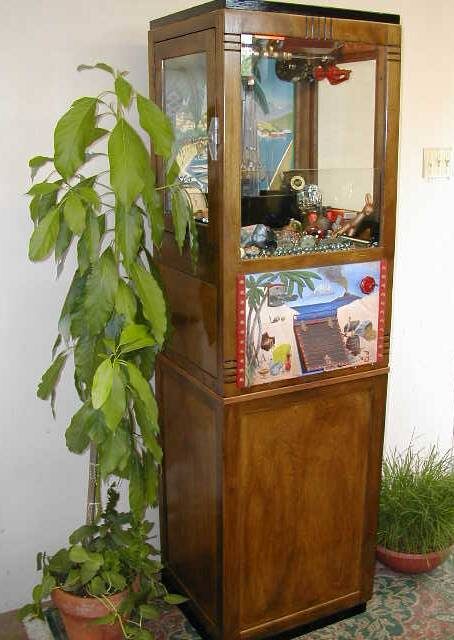- Home
- Replacement Artwork,logos,etc Available
- The Allwin Arcade
- Trade Stimulators
- The Strange & Unusual
- The Aristocrat Collection
- The Bally Collection
- The Bell-Fruit collection
- The BDR/BMR Collection
- The Bryans Collection
- The Buckley collection
- Caille Brothers Collection
- Working Models
- The Groetchen collection
- The Hawtin's Collection
- The Jamieson's Collection
- The Jennings collection
- The Mills Collection
- The NSM (Bingen) Collection
- The Oliver Whales Collection
- The Pace Collection
- The Parkers Collection
- The Rock-ola collection(slot machines)
- The Ruffler & Walker Collection
- The SEGA Collection
- the Shefras collection
- The TH.Bergmann Collection
- The Tom Boland collection
- The Watling collection
- The Whittaker Bros Collection
- the Wondermatics collection
- The Wulff Collection
- The Juke Box Age
- Coin Operated Cranes & Diggers
- Coin Operated Shooting Games
- Coin Operated Weight Scales
- slot machine coins & tokens for sale
- Amusement Arcades from the Past
- The British Seaside Pleasure Pier
- The Market Place
- Coin Operated Related Seaside Postcards
- See a Selection of the More Complex Machines at Work
- Stuart Dale's Imperator Rebuild
- Stuart Dale's Steam Shovel Project
- The "Allwin" Machine
- Useful Links
- The Rye Heritage Ctr Collection of Working Models
- Williamson's Vintage amusement arcades
- Contact Us
Cranes & Diggers
A Very Long Love Affair

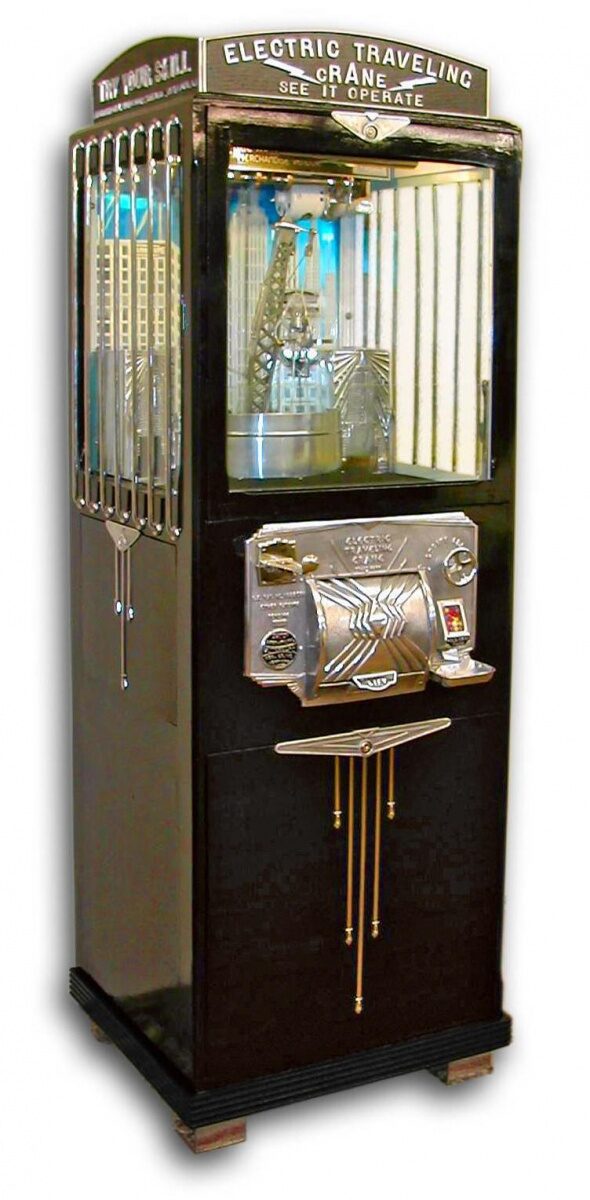
This photo and many others in this section are reproduced with the kind permission of James Roller the talented American Crane/digger collector and restorer
In the slot machine world, the coin-operated crane or digger just refuses to go away. Notoriously considered unfair to the player the paying public has loved them from their invention in 1896 to the present day. Most collectors want one (if they have the room that is). Often beautiful pieces of furniture expertly made with interesting art Deco designs they are everyone's favourite.
Firstly, what's the difference between a digger and a crane? Well with some exceptions nothing really. Most offer the same game, a chance to grab a prize with some sort of grab and for most of their life span the two were offered as variations of the same game.
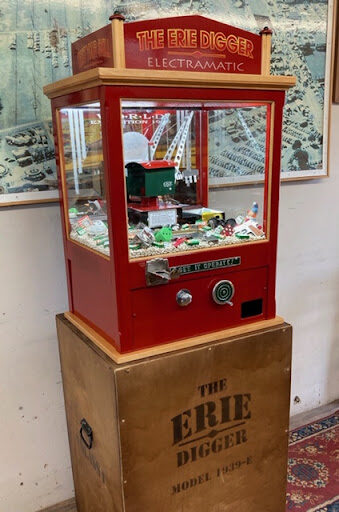
Erie Digger (model 1939-E) note the original packing case designed for transport and as a stand
In 1896 the first digger was made by converting a child's toy with the idea of making it into a coin-operated candy vendor, but the idea seems to fade away almost at once until 1924 when three companies, The Erie machine Co, William Bartlett & co and Norwat Amusement Devises, brought out very similar diggers at the same time, so close to each other were the launches that no one is sure who was first but the first design (1918) was defiantly the William Bartlett but this machine, although it proved to be very popular indeed for decades, was never offered for sale to the slot machine market so it was left to the Erie Digger to become the big seller in the early market.
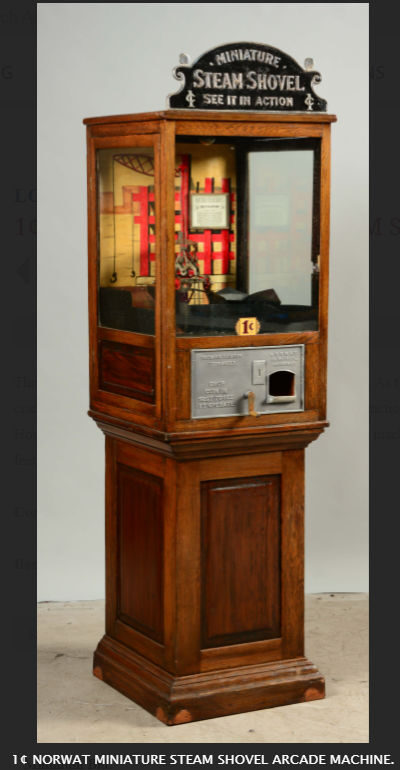
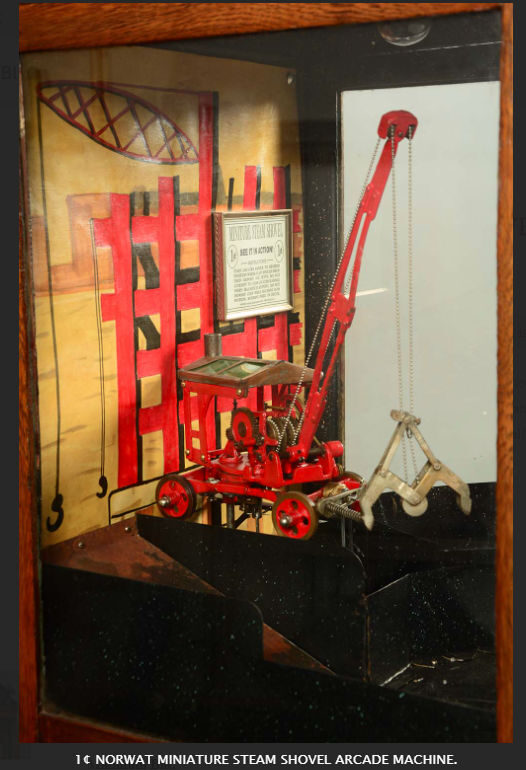
The diggers were an instant success particularly with travelling fairs, they were (at first) small, all mechanical and provided a good and popular game for the punter. They were also easy to transport, both Erie and Exhibit supply sent out their machines in strong packing cases designed to both house the machine when being transported between venues and act as the stand for the machine. (see photo above)
Very soon Diggers were essential at a fairground and other makers saw the potential in other markets and jumped on the bandwagon. Especially Exhibit supply and Mutoscope who would go on the produce some of the best looking classic cranes and diggers.
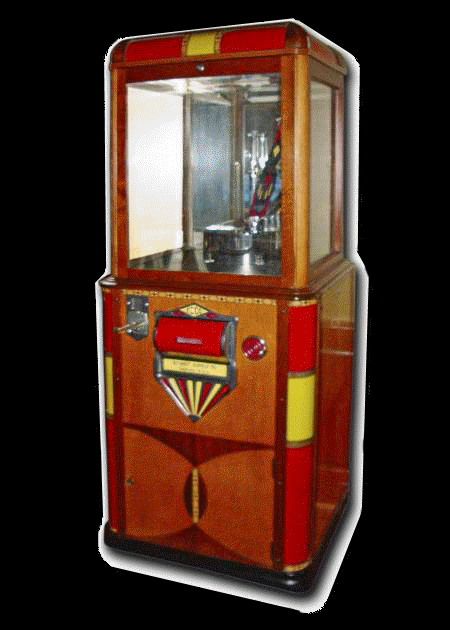
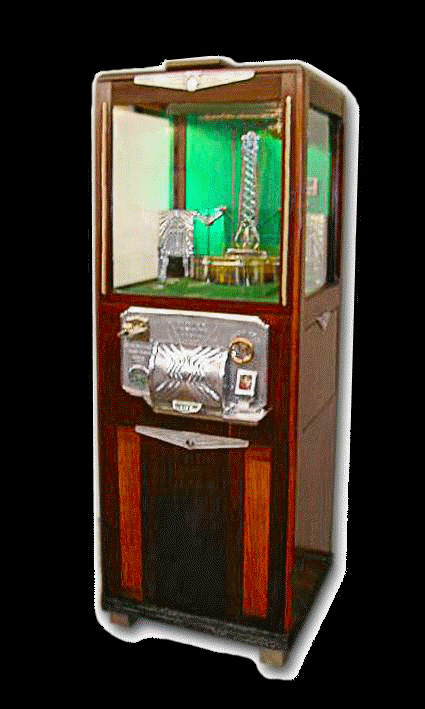
James Roller restorations
Exhibit Supply "Sunburst" Mutoscope "Emerald"
The public loved them and soon full height grab cranes were appearing everywhere from parks to hotel lobbies and from railway platforms to supermarkets. Many would become truly attractive items with classic lines and timeless appeal.

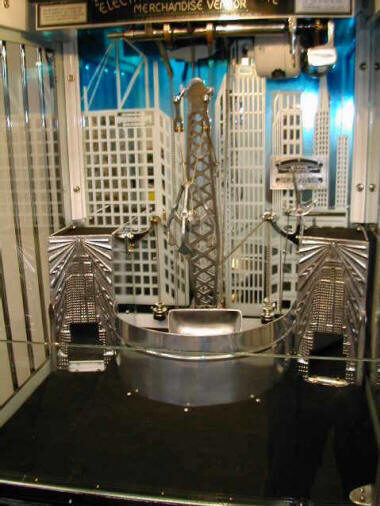
The elegant mutoscope "Newyorker" (1935) a James Roller restoration
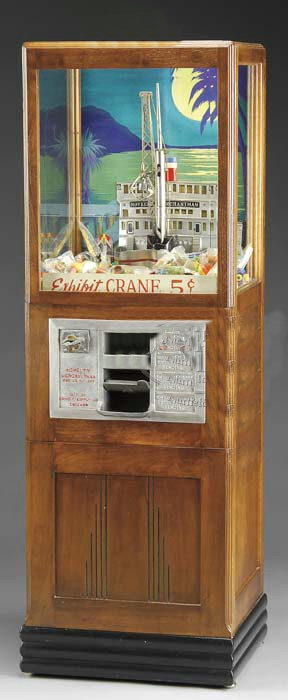
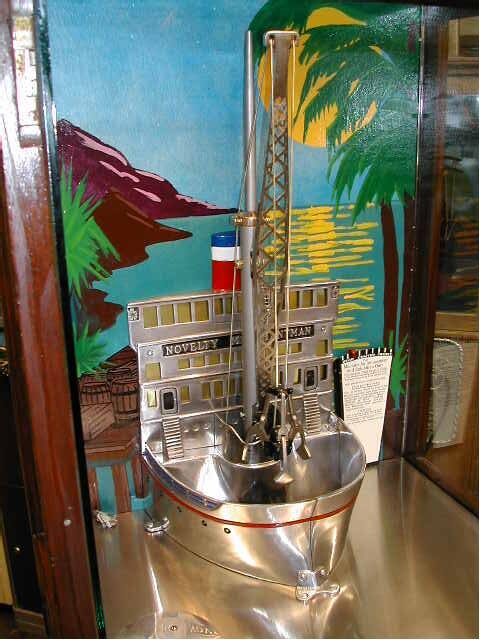
The classic Exhibit Supply "Merchantman" (1938)
It was carnival operator William Bartlett who was the first man to patent the digger from a design he came up with back in 1918 (although not patented till 1932) He hit on the idea of keeping the profits "in house" and never sold these machines to other operators. His method was to licence the use of his machines, for his own profit, to carnival operators through a network of "agents" paying the operator a fee for siting the batches of 12 to 16 machines. At the time of Bartlett's death in 1946, he had over 40 agents supplying concessions to carnival operators all over the USA and Canada. The business continued successfully until the 1951 Johnson Act killed the cash prizes and the electric digger. It is a fact that the Bartlett "Miami digger" was a true gambling machine as the prizes were in the form of cash coins ranging from 25c to silver dollars. This led to these machines being known as "Nickel diggers". The business managed to continue in Canada until 1975 when the RCMP finally closed down the concessions citing them as gambling establishments.
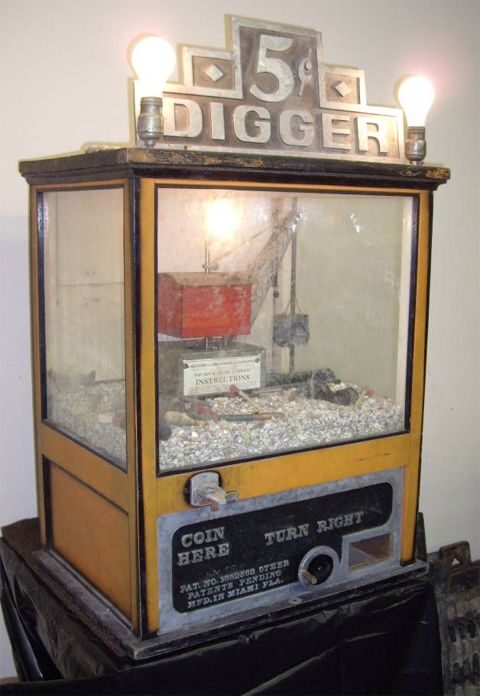
a perfectly restored Bartlett "Nickel Digger" a James Roller restoration
Enterprising operators soon realised that small prizes were a bigger draw than candy and from there it was a short hop to cash prizes, silver dollars and paper money soon found their way into the prize tray. This changed the crane into a gambling machine and legal problems soon followed. Laws restricting the use of cranes came and went and, as usual, the operators were always looking to stay one step ahead. Following WW2 cranes using cheap Japanese made plastic toys became popular with the toys often hiding cash prizes inside. Other machines offered toy prizes that were "exchangeable" for cash at the attendant's booth. even more, paid out in batches of 20 free games displayed on a meter, these could be played off or cashed in for cash through the attendant. Some even dispensed a small amount of candy on every play insisting that the machine was only a sweet vendor and the game was a free bit of fun. usually, the law disagreed.
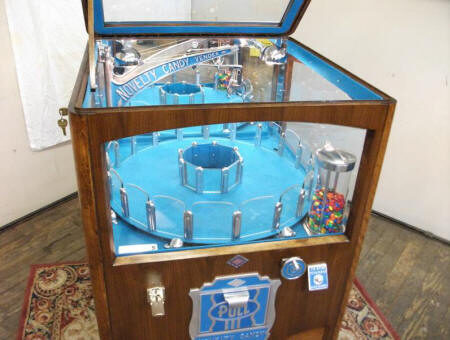
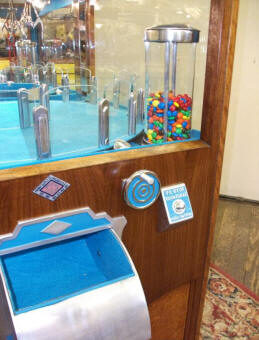
Exhibit Supply rotary crane masquerading as a candy vendor the above unit dispensed candy on every play
a James Roller restoration
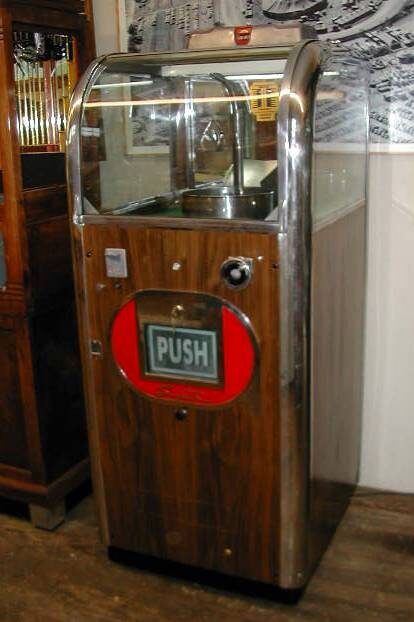 The Sidebottom Super (1950)
The Sidebottom Super (1950)
a James Roller restoration
this machine could be switched to pay standard prizes, cash-in prizes or metered free plays (also cashable) and yes, that top is real glass
In 1951 the Johnson Act came into force banning the transporting of gaming machines across state lines killed all slot machines in the USA and cranes were (ludicrously) included with one arm bandits. Some of the big operators were running as many as 40 travelling venues at the time and the law closed them down overnight. A few, led by Lee Moss who had bought the Erie Manufacturing Co in 1946, banded together and lobbied the US government for more than 2 years eventually gaining concessions for some cranes and diggers to be reclassified as "amusement machines", but prizes were limited in value as was the cost of playing the game and electric machines would remain banned altogether.
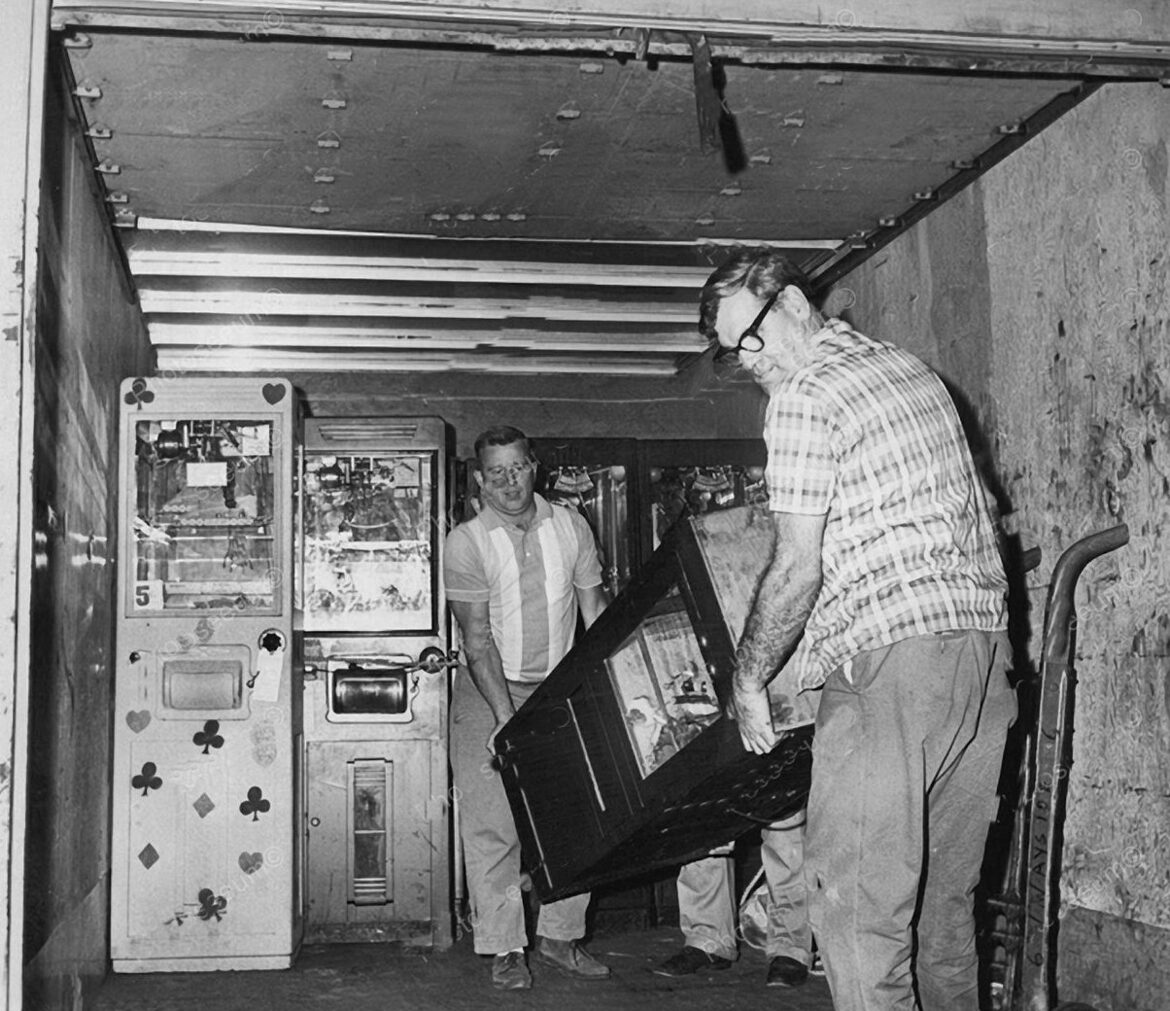 Cranes being confiscated in 1951
Cranes being confiscated in 1951
With cranes restricted in the USA, European and far east made cranes took centre stage after 1960, but not before Como Industries of Chicago developed and introduced a new style of crane, the Holly Crane was a product of the restricted laws, it was designed around 1950 as a low-value prize grabber with kids in mind. This large floor sitting crane took the form of a mostly glass case low enough for a player (of any size) to lean over and "aim" the grab which moved along and across the cabinet on two axis, one after the other. These were extremely popular and variations exist in large numbers to this day.
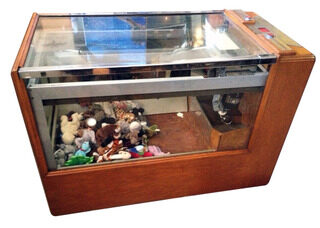
The Holly Crane, Como Ind (1951)
Not until 1970 would the laws be removed and modern cranes return in large numbers around the world. Today modern electric cranes dispense large, quality toys and bundles of cash as high as $1,000. In Japan, whereas slot machine arcades other than pachinko have all but disappeared high street arcades of 40+ cranes are commonplace. Sega brought out their first modern EM crane for their home market in 1965, still paying homage to the original name the machine was called "Skill Diga" and was followed 3 years later with "Super Skill Diga" These machines appealed to the Japanese in a way not seen in any other country and they were soon the top arcade earners in the country, By 1970 the plush toymakers (also a particular favourite in Japan) had recognised the potential of linking the two together and large cranes suitable for offering large fluffy toys were soon flooding the Japanese market and they have stayed popular ever since with the market spreading throughout Asia including China
Who knows what it is that fascinates us with a coin-op crane? When I was a kid I wanted to play them (despite the cries of "you will never win on those") when my daughter was a kid the same sequence took place now she is an adult and when we go to a fair we still make a beeline for the cranes in an attempt to will a prize we don't really want !!
------------------------------------------------------------------------
------------------------------------------------------------
Although the grab machine would always have the same function several styles were tried in an attempt to keep the game fresh
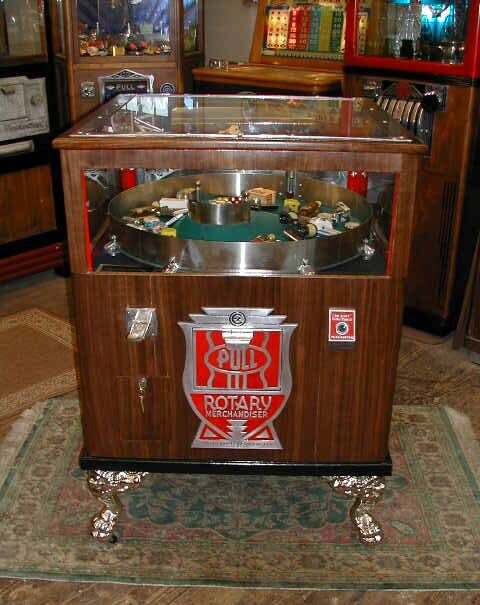
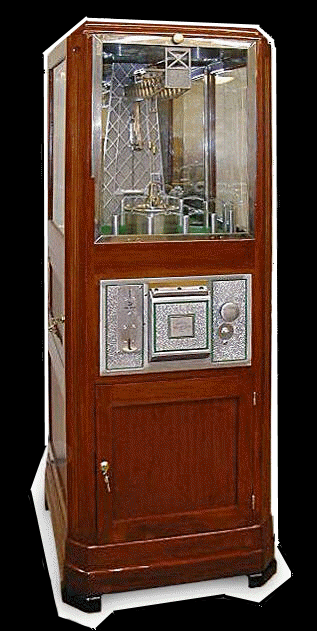
a James Roller restoration
A rather nice Exhibit supply cabinet crane This European made crane featured an overhead crane not unlike
a modern container crane
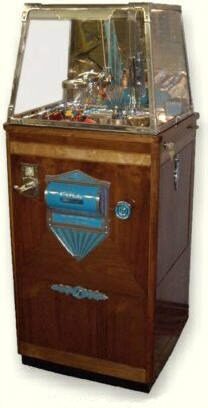
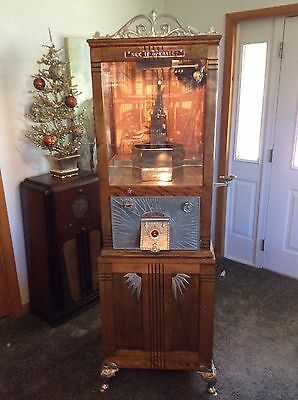
a James Roller restoration
The Exhibit Supply "Crystal Palace" (1939) tried Buckley made some really nice designed cranes
some new features, an all-glass top for a better view this is, perhaps not the best one
and an angled mirror to show off the prizes.
the one shown above has a rare optional candy vendor
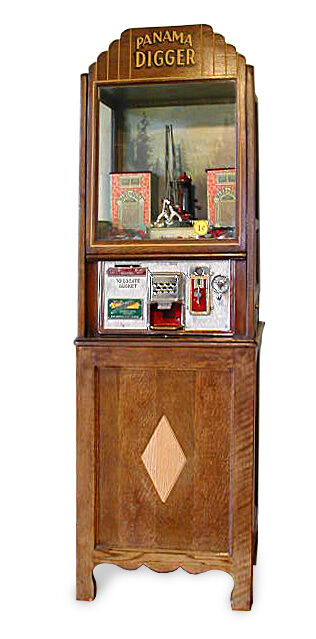
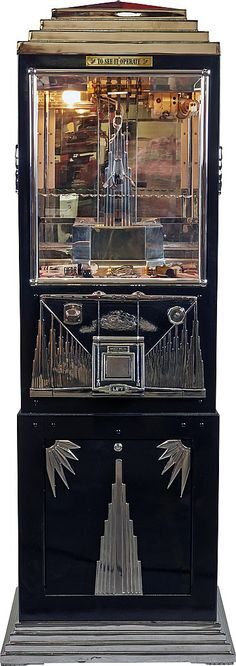
a James Roller restoration
This early "Panama Digger", Scientific Machine Co (1926), is a little overshadowed by the art deco design of the Buckley machine next to it, which one would you choose to play?
note-; the Panama Canal, famous for the giant steam shovels used to build it, was completed just 10 years before this machine came out and the steam shovel was a bit of an industrial icon in the USA so not surprising it found its way into the slot machine market.
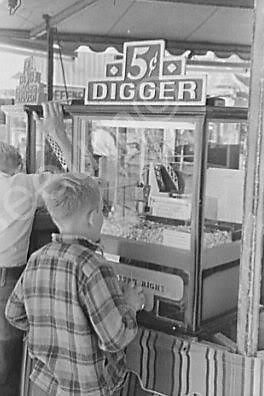
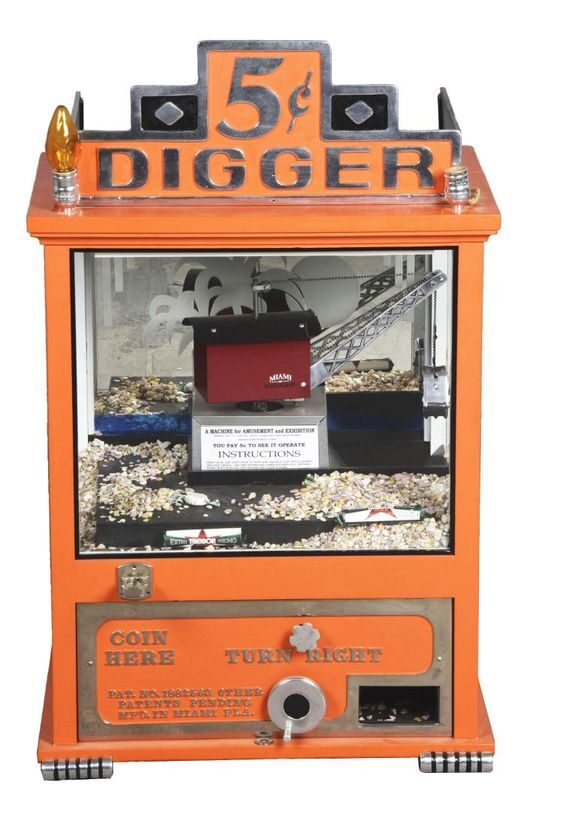
A Bartlett "Nickel Digger" in use at a travelling fair concession next to a restored version of the same machine
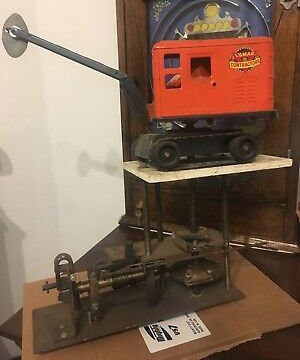
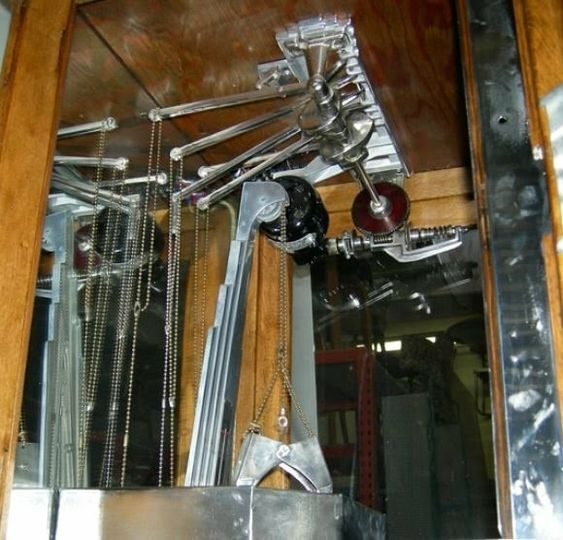
The Erie Digger mech the upper works of a mutoscope full case crane
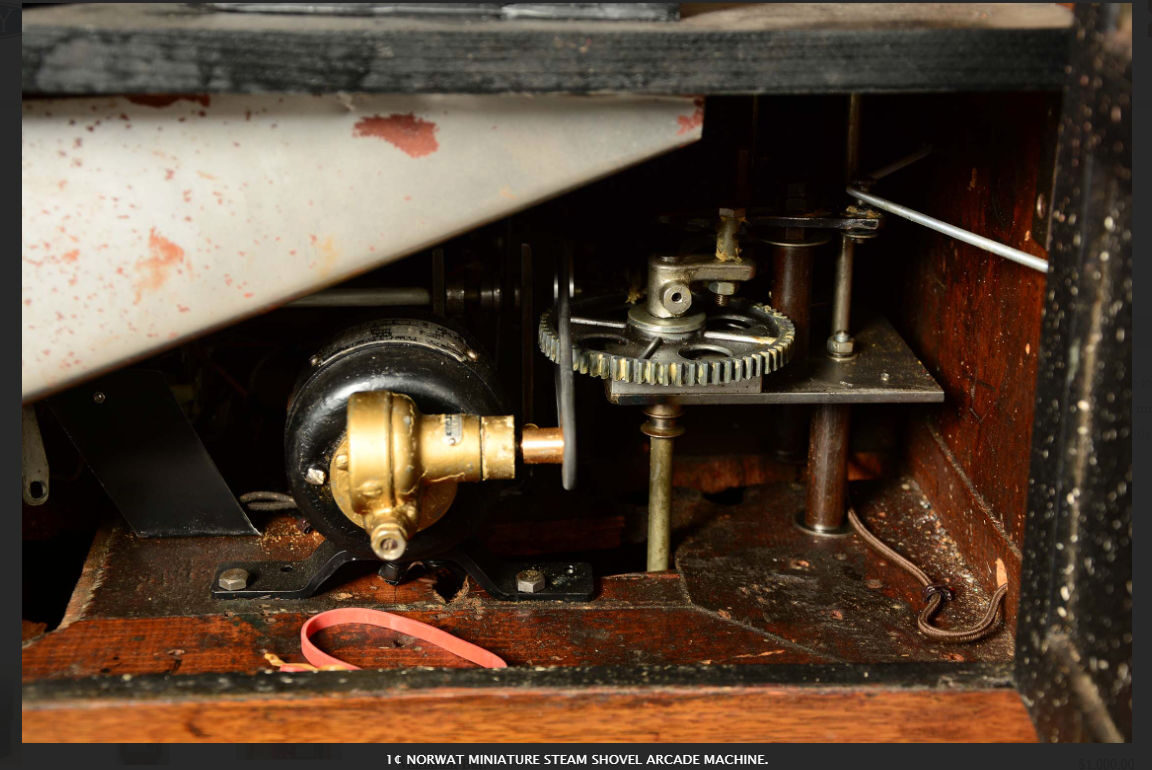
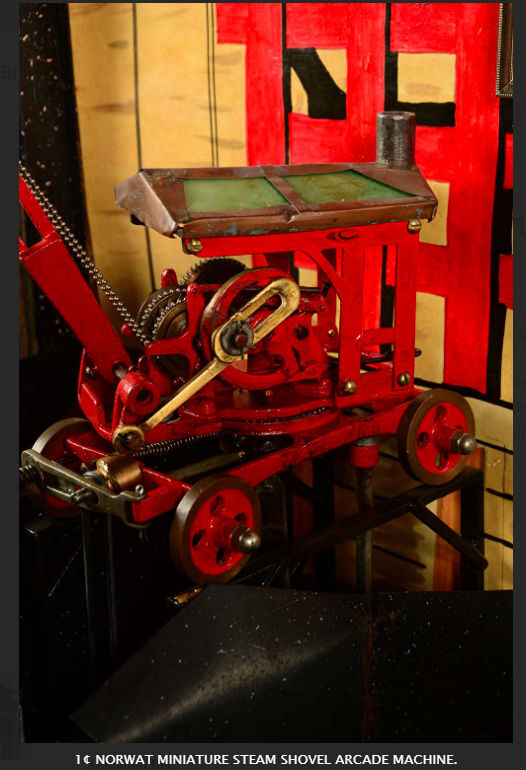
Norwat steam shovel mechanics
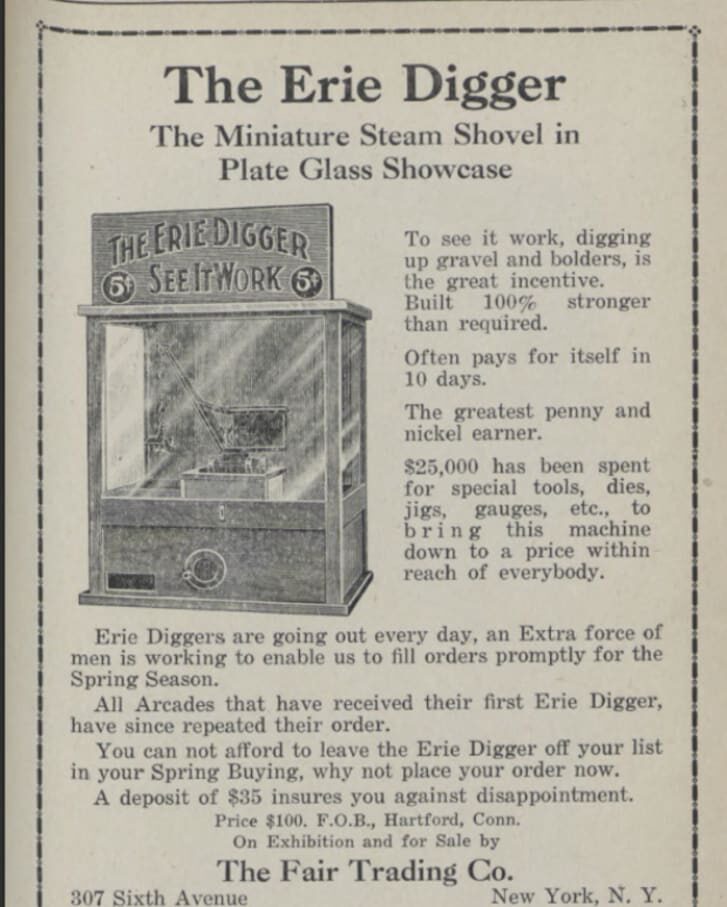
As mentioned earlier most diggers grabbed for prizes, but not all by a long way. the other version simply dug gravel and stones to be loaded into a hopper often displaying the weight of the gravel moved within a fixed time, sometimes as a test of skill and sometimes to reach a prize-winning amount. These resembled the original concept of a candy digger
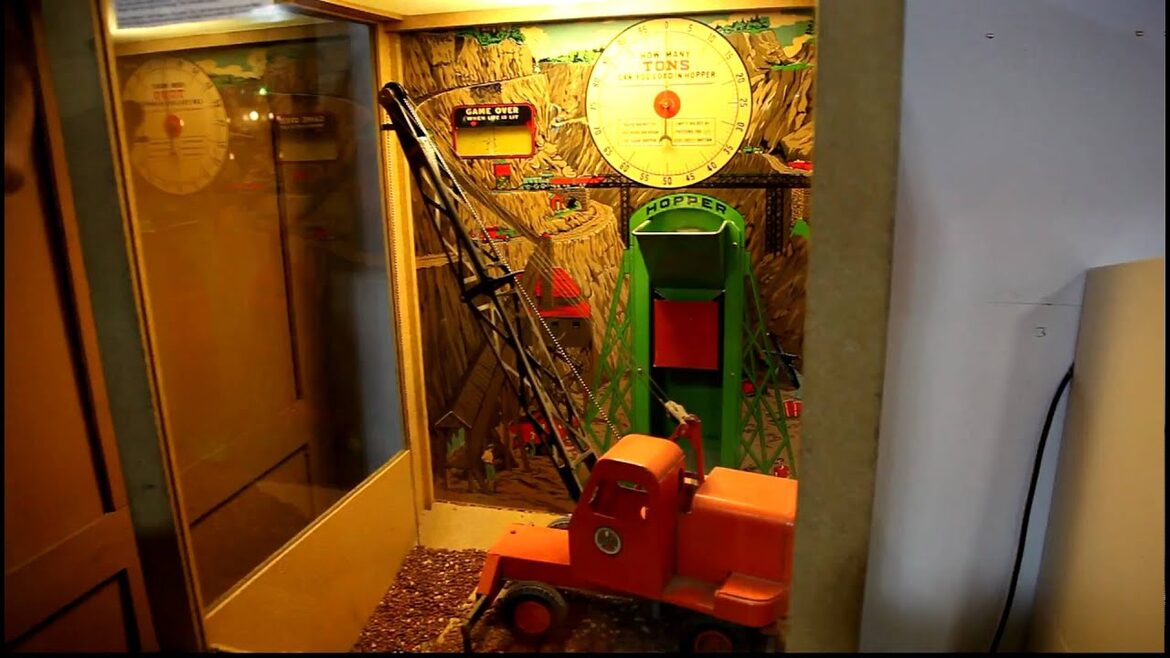
Williams Gravel digger (1954)
In Europe, slot machine makers especially in France and the UK were quick to see the potential of the crane although the "Digger" style never really caught on like it did in the USA. In the UK successful slot machine maker and talented engineer William Bryan led the way in the crane market with some interesting and different designs and the company was still making cranes as late as the mid-1960s
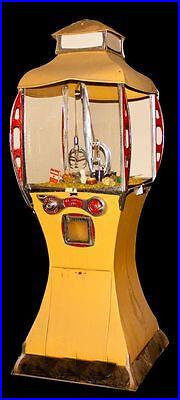
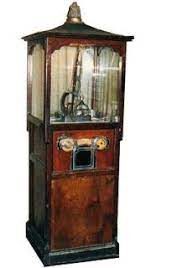
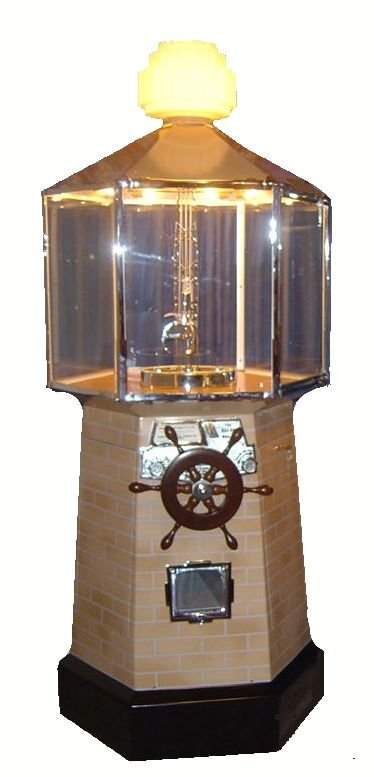
Bryans cranes, "Allsquare" (metal case and wood case) Walden Goliath
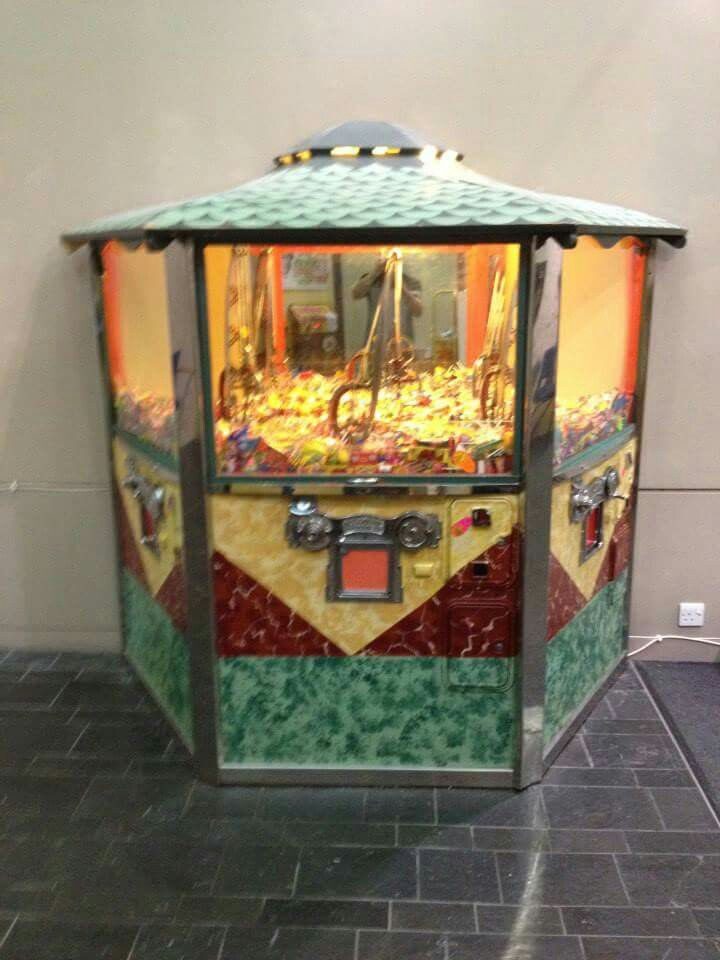
Bryan's three-sided crane
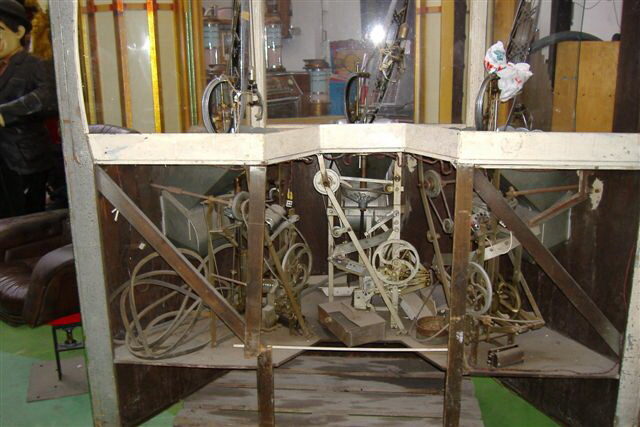
Inside the three-sided crane
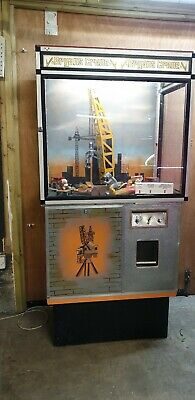
Bryan's designs often failed to suit the 1960's but this late crane was an exception
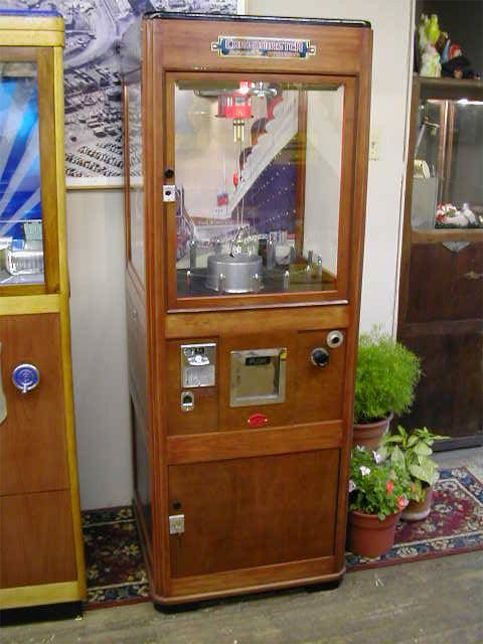
a James Roller restoration
These "Cargomaster" cranes were made by Cargomaster Manufacturing in both France and the USA
(this one is French) these machines had particularly nice graphics, this machine can be seen in action at the top of the page under the menu area
Below are just a few of the many models made including
some of the lesser-known makers
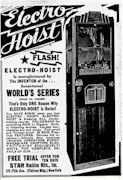
The"electro Hoist" Star Manufacturing
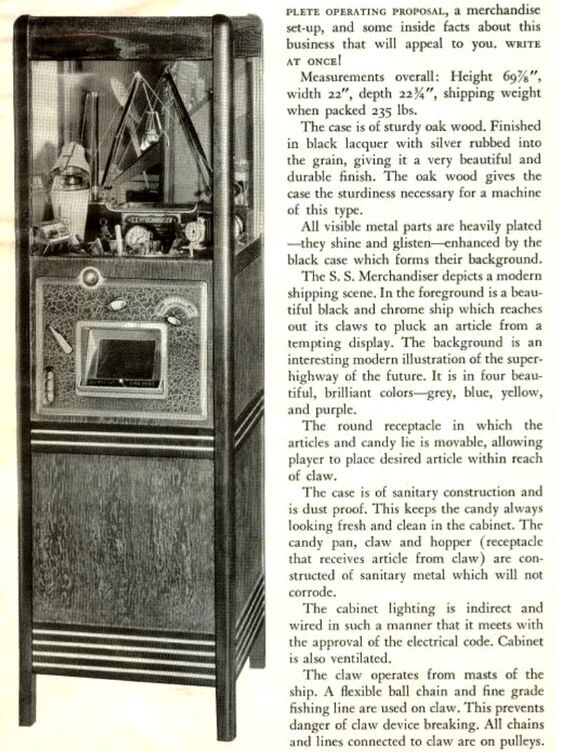 The "S S merchandiser"
The "S S merchandiser"
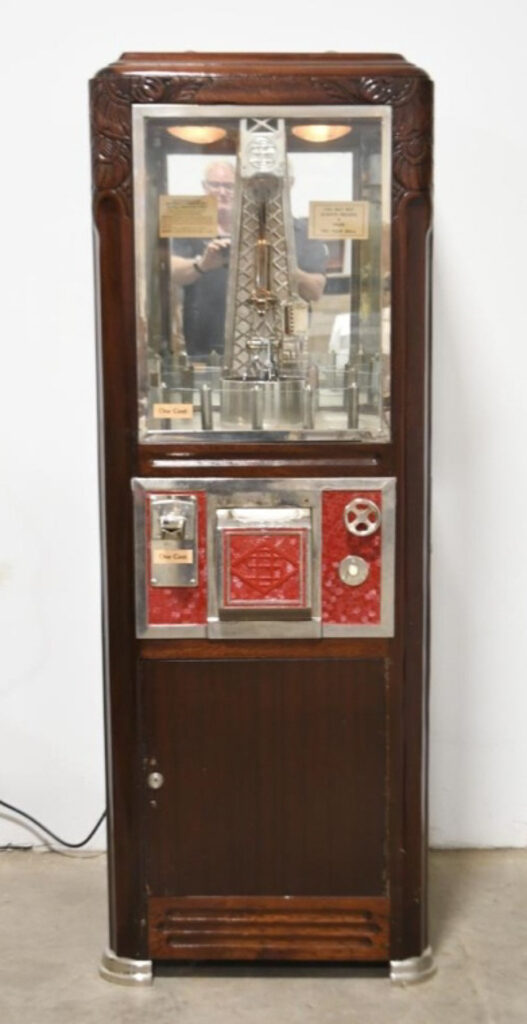 ,
,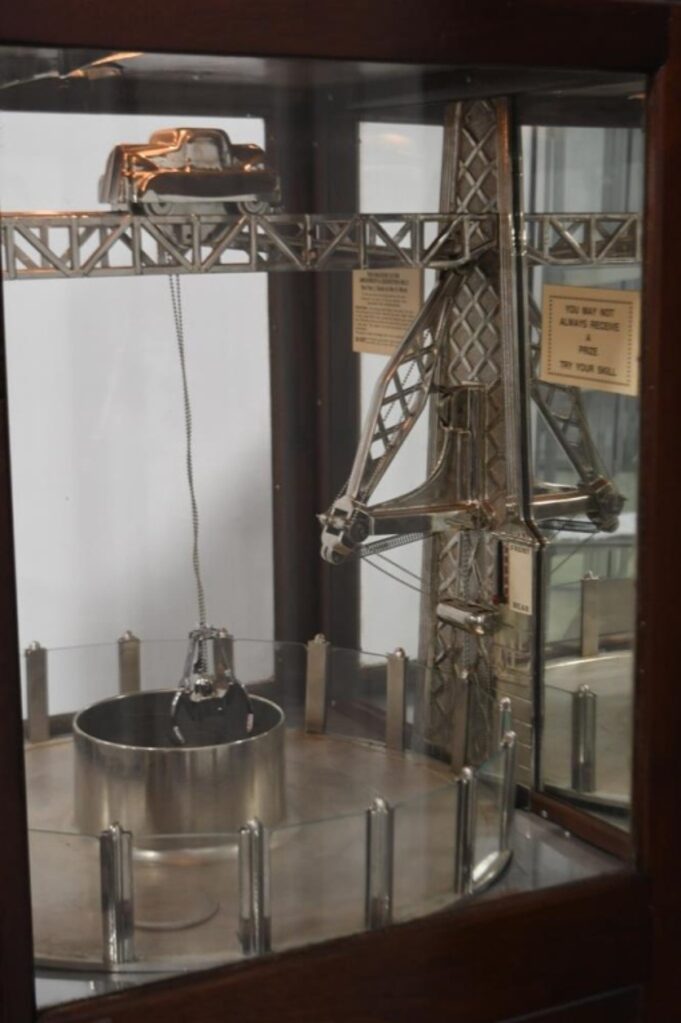
The Bonzini Sopransi "Bridge Crane"
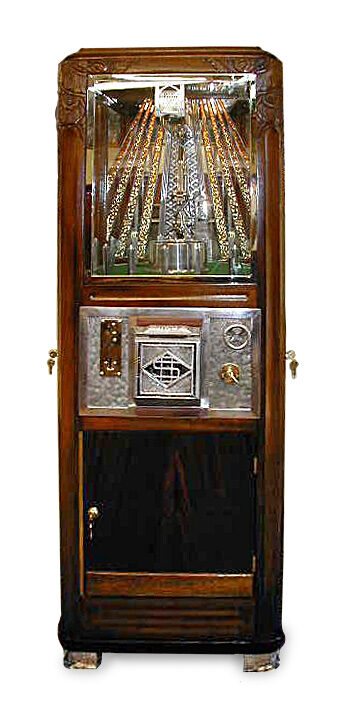
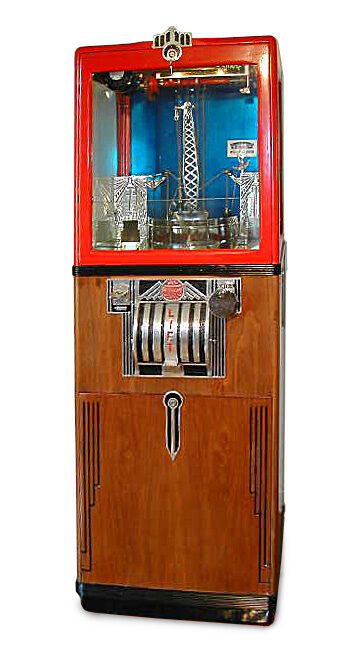
a James Roller restoration
European (Bonzini & Sopransi) 9th bridge transporter Mutoscope "Red Top"
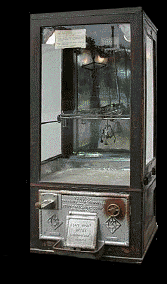
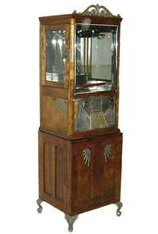
a James Roller restoration
"Yankee Traveler" Stulz Co (1935) Buckley travelling crane
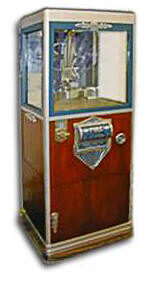
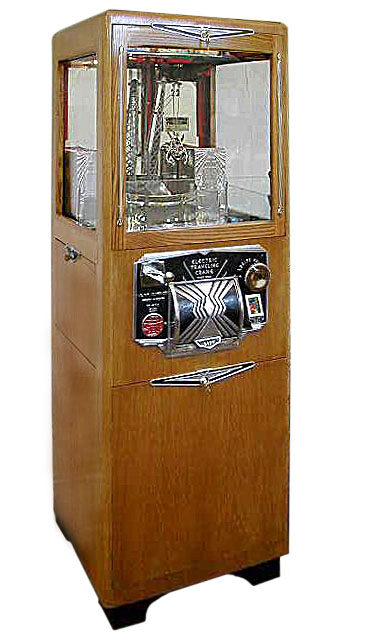
a James Roller restoration
Exhibit supply "blue Streak" Mutoscope "Oakwood"
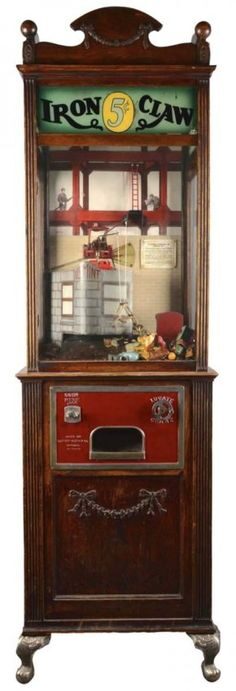
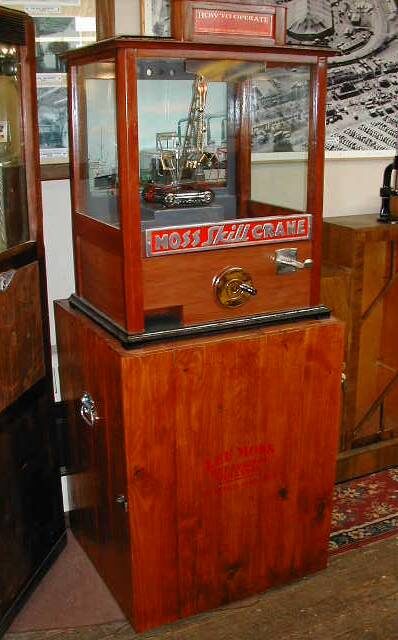
Exhibit supply "Iron Claw" Lee Moss "Skill crane" (with travelling case/stand)
a James Roller restoration
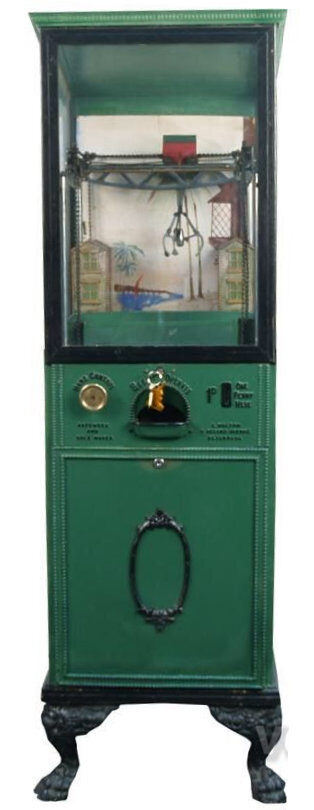
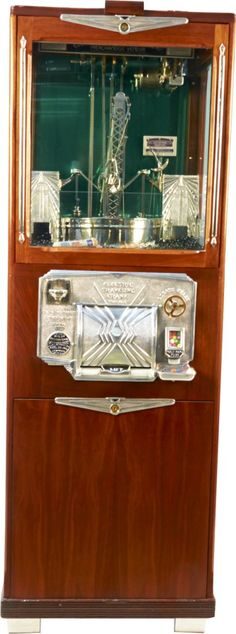
sideways mounted bridge crane (make unknown) Mutoscope Standard (1938)
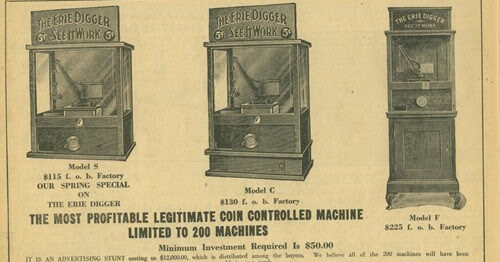
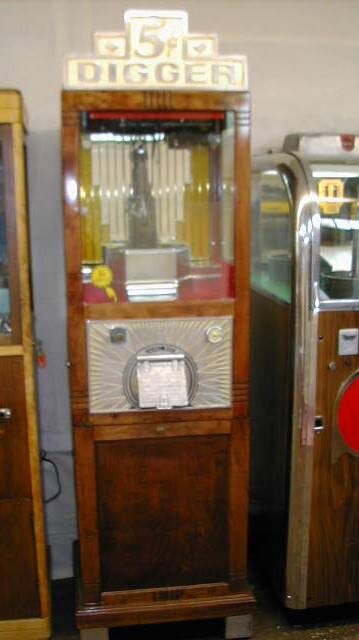
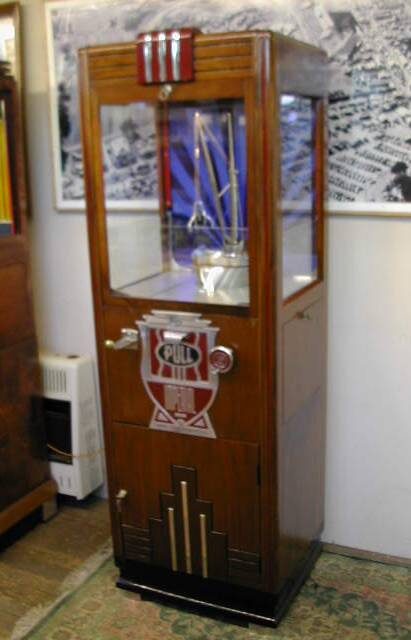
a James Roller restoration
Buckley "Jewell Box" Exhibit supply "Imperial"
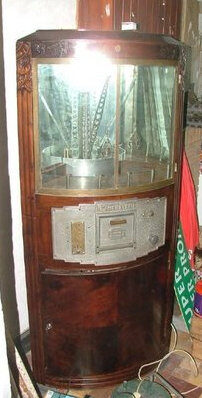
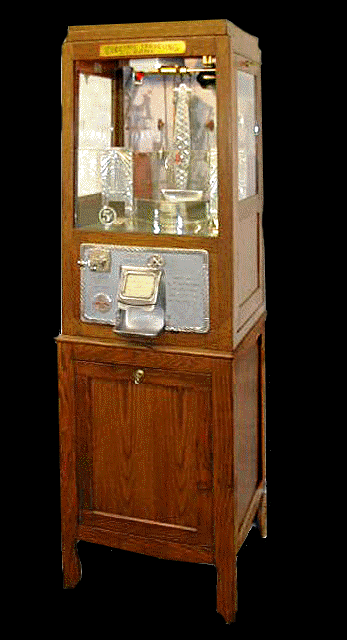
French-made corner unit crane Mutoscope Champion
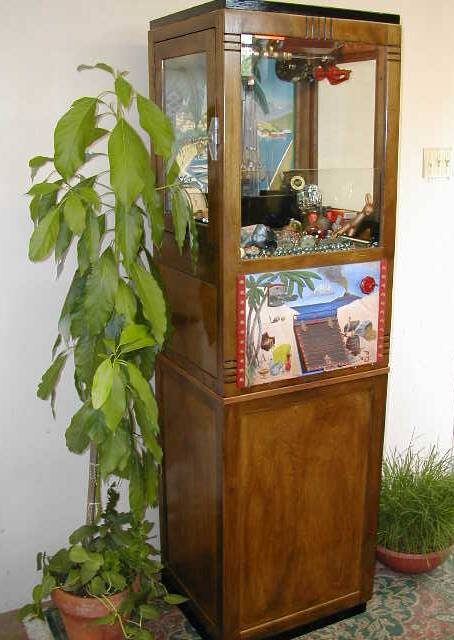
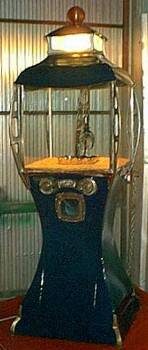
a James Roller restoration
Buckley "Treasure Island" (1938) Bryans "Allsquare"
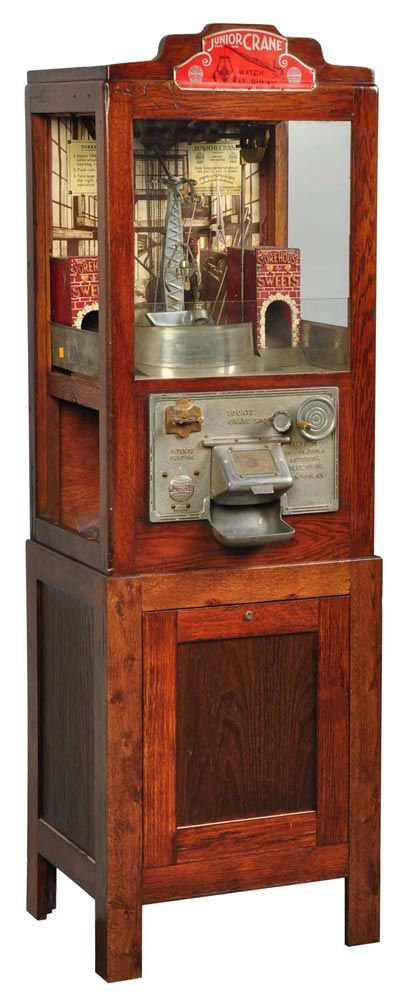
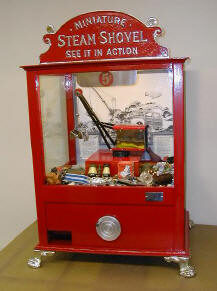
Mutoscope "Junior" Erie Digger "Steam shovel"
a James Roller restoration
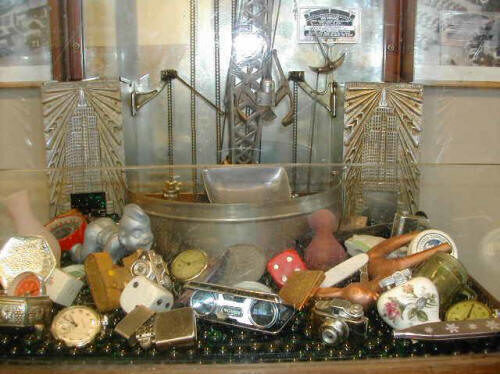
a James Roller restoration
A selection of prizes offered (but not easily won) in early Cranes
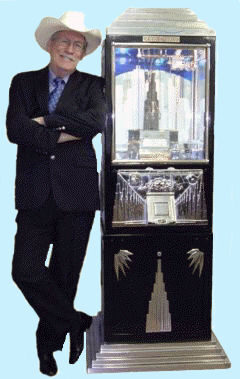 James Roller. Visit his Crane restoration site HERE
James Roller. Visit his Crane restoration site HERE
See Also Stuart Dale's Steam Shovel restoration
Project click HERE
